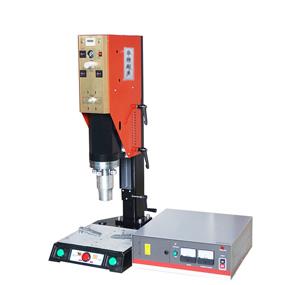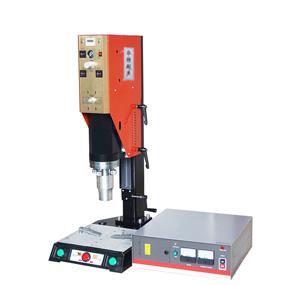
Desktop ultrasonic welding machine
What are the common fusion welding methods of desktop ultrasonic welding machine?
Welding method:
Ultrasonic ultra-high frequency vibration welding head can generate frictional heat on the joint surface of two pieces of plastic under medium pressure, and melt instantly. The welding strength can be equivalent to the main body. Appropriate workpieces and reasonable interface design can achieve waterproof and airtightness, avoid the inconvenience caused by auxiliary products, and achieve efficient and clean integration.
Riveting method:
The ultrasonic ultra-high frequency vibration welding head is pressed on the convex pin of the plastic product, and it is instantly heated and melted into a rivet shape, and the materials of different materials are mechanically riveted together.
Implantation method:
With the help of the channel of the welding head and appropriate pressure, metal parts (such as nuts, screws, etc.) are instantly squeezed into the reserved plastic holes and fixed to a certain depth. The tensile force and torsion force after molding can be equivalent to the traditional mold, avoiding the defects of injection mold damage and slow injection speed.
Forming method:
This method is similar to the riveting welding method. The concave welding head is pressed on the outer ring of the plastic product. After the ultrasonic ultra-high frequency vibration of the welding head is emitted, the plastic is melted and formed, and then coated on the metal object to fix it, and the appearance is smooth and beautiful. This method is mainly used for the fixing and molding of electronic products, the fixing of loudspeakers and cosmetic lenses.
Spot welding method:
A. In order to achieve the purpose of welding, it is not necessary to design the welding wire in advance.
B. For large workpieces, spot welding is not easy to design welds. To achieve the welding effect, multiple spots can be spot welded at the same time.
Cutting seal method:
Using the working principle of ultrasonic instantaneous vibration to cut chemical fiber fabrics, it has the advantages of smooth cutting, no cracking, and no drawing. High-frequency waves and ultrasound are two different concepts. High-frequency waves refer to electromagnetic waves with frequencies greater than 100kHz, and ultrasonic waves refer to sound waves with frequencies greater than 20kHz. The welding principle and welding principle of high frequency waves are also different from ultrasonic waves. The high-frequency electromagnetic field is used to cause the internal molecules of the material to collide with each other to generate high temperature to achieve the purpose of welding and welding; the ultrasonic wave is used to generate a large amount of heat through the friction principle to achieve the purpose of welding and welding.



